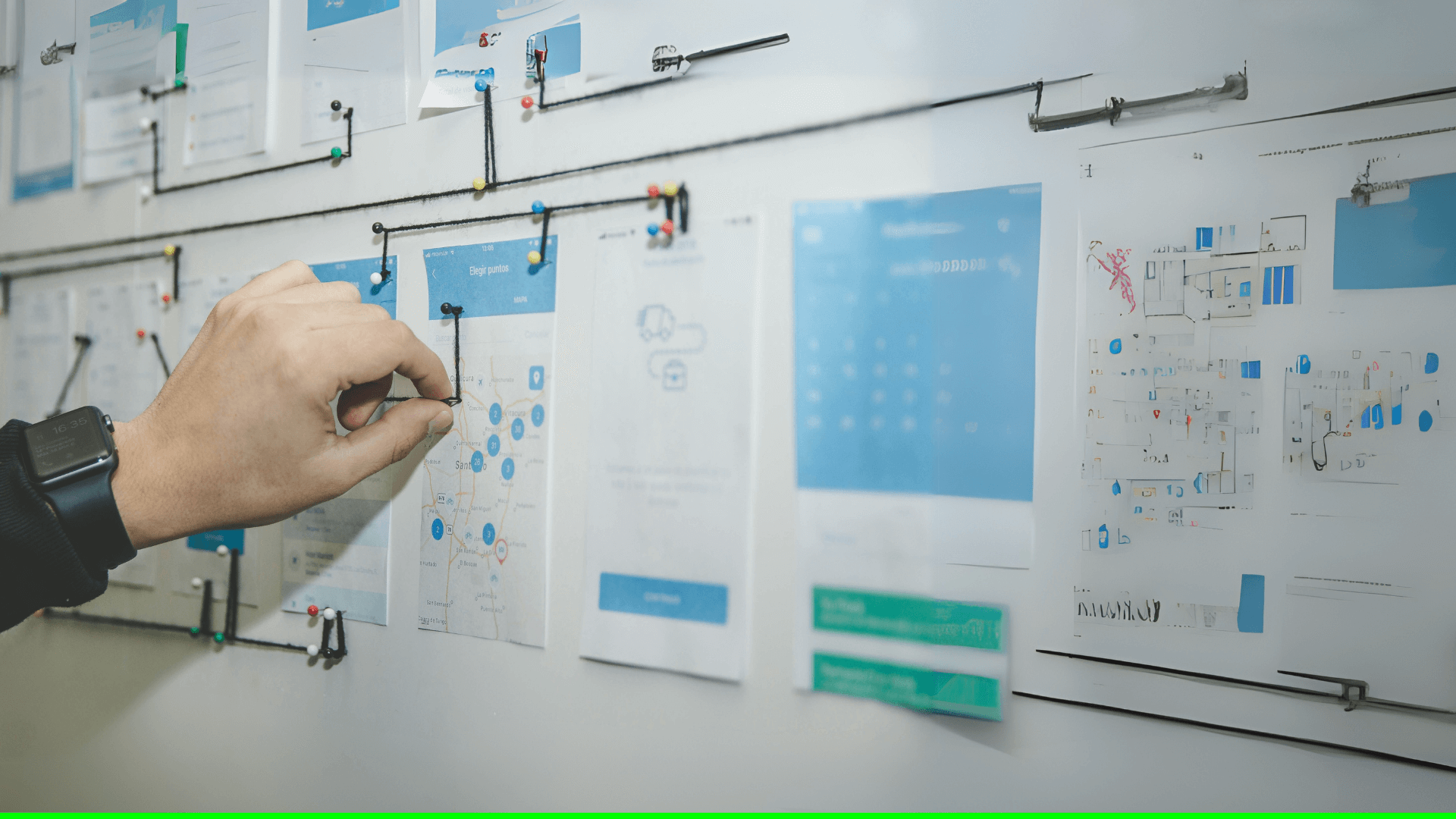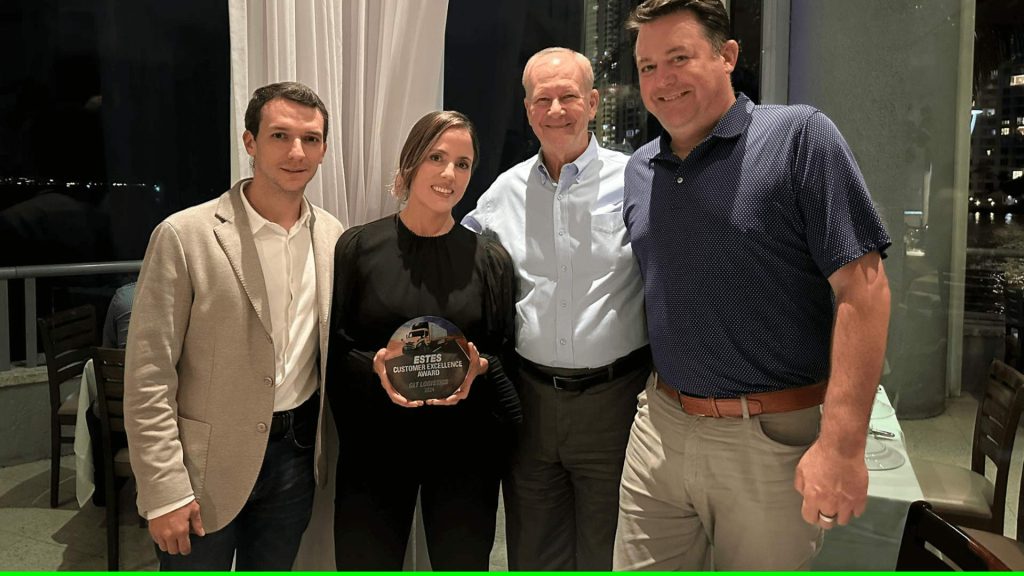When it comes to logistics, standing out is about more than just having the capacity to move goods from point A to point B at the lowest rate. True differentiation comes from building trust and providing peace of mind, key factors in customer satisfaction.
Think about a situation you’ve likely experienced: when you need to leave something truly important to you in someone else’s hands—whether it’s your child, your pet, or even your home. Price and service conditions matter, but above all, you need the reassurance that it will be cared for as if it were their own. You might even be willing to pay a bit more if you’re confident it will receive the attention and protection you expect.
It’s the same in logistics. Customers are willing to commit to your service if it truly stands out—if you can eliminate their concerns about the logistics process, allowing them to focus on what matters most: running their business.
That sense of trust is what we call Customer Experience (CX), a crucial asset for companies seeking differentiation. In logistics, while rates and capacity remain important, they are no longer the only factors that set businesses apart. Companies that still focus solely on these aspects often overlook a simple reality: according to studies, acquiring a new customer is five to 25 times more expensive than retaining an existing one.
When you bet on Customer Experience, you go beyond simply excelling at your core activity. You become even more valuable to your customers by delivering consistent experiences, personalized interactions, and a sense of trust at every touchpoint—keeping them coming back.
83% of 1,000 American consumers surveyed said that excellent customer service increases their trust in a company, and 58% would be willing to pay more if it meant a more convenient experience.
Source: Shep Hyken
If you want your company to capitalize on this insight, keep reading to discover how to create financial value and build a strong company reputation through Customer Experience. We’ll explore strategies to enhance it, ways to measure its impact, and how to leverage it for long-term business success.
Customer Experience: A Key Success Factor in Logistics

Customer Experience is about creating positive emotions in your clients through every interaction with your company. In logistics, this is a true challenge because each participant in the supply chain plays a critical role in the success of the project, and your customers face numerous risks and concerns regarding the transportation of their goods. When it’s your turn to support them in this crucial part of the process, they expect you to eliminate any source of stress. Building trust and evoking positive emotions can reduce the pressure and add significant value to your service.
This can be achieved at every touchpoint, as not only your service itself but every interaction is important for creating a positive experience. If any of these touchpoints fail or fall short of your customer’s expectations, it could be enough to create a negative experience that might prevent them from trusting you again. That’s why it’s essential to pay close attention to every step of their journey, including:
- The first commercial contact
- The onboarding process
- Negotiations
- Cargo pickup
- The delivery experience
- Billing
- Post-sale service
Ensuring that these steps are easy, effective, and enjoyable for your clients is what can truly make a difference.
Now, you might be wondering: How can you ensure a great customer experience throughout the entire journey, especially when there are numerous steps, departments, and people involved? Here are some key strategies you can implement:
1. Measure Customer Satisfaction to Identify Gaps
Data provided by your customers is the best resource you can use to promote continuous improvement in your company’s processes. These are some of the critical indicators you can measure to foster a culture of customer satisfaction, reduce operating costs, and skyrocket your brand’s reputation:
● Net Promoter Score (NPS):
This indicator goes beyond simply assessing whether a customer liked their experience with the company. Instead, it provides insight into their overall opinion with a single question: “Would you recommend our company?” Based on their response, customers are typically grouped into three categories:
a. Promoters (score 9–10): They highly value your company, are likely to recommend it, and reflect a strong brand perception. Analyzing what worked for them helps you retain these customers and attract new ones.
b. Passives (score 7–8): They feel neutral about your service. They’re satisfied but not loyal, and could easily switch to a competitor if they don’t see a meaningful difference.
c. Detractors (score 0–6): These customers had a negative experience and may even speak poorly about your brand. They require special attention to understand what went wrong and how to improve their perception.
Understanding your customers’ NPS scores is crucial, but it’s also important to evaluate how your score compares to others in your industry.
The average NPS score in the logistics and transportation industry worldwide is 40 points, with this score often being affected by issues that arise during the service process.
Source: SurveySensum.
By knowing your competitors’ scores, you can better assess your position in the market and identify areas where you can improve.
● Customer Satisfaction Score (CSAT):
This metric measures how satisfied customers are with a specific interaction, product, or service. It is typically assessed through a simple survey asking customers to rate their experience on a scale, often from 1 to 5 or 1 to 10. A higher score indicates a more positive experience, while a lower score suggests dissatisfaction.
In logistics, CSAT is crucial for understanding how well your company meets customer expectations in key areas such as delivery accuracy, communication, and problem resolution. A low CSAT score can signal gaps in service that lead to frustration, while a high score reflects efficient processes and strong customer support. By continuously monitoring CSAT, you can pinpoint areas for improvement and take action to enhance customer satisfaction and loyalty.
● Customer Retention Rate (CRR):
It measures the percentage of customers that continue doing business with your company over a specific period. It reflects how well your company maintains long-term relationships with clients, ensuring that they remain loyal to your brand instead of turning to competitors. A high retention rate suggests that your customers are satisfied with your service and that your company is successfully meeting their needs over time.
By keeping a close relationship with these clients, you gain a deeper understanding of the factors that make your service stand out and can identify areas for improvement across your processes.
2. Build a Dedicated Customer Experience Team:
Perhaps you already track key performance indicators to evaluate your service, but do you have a specialized team of customer experience experts who analyze these results, reach out to every customer to listen to their feedback, and create strategies to improve the overall process?
In logistics, where complexity and time sensitivity are critical, a Customer Experience team can proactively identify potential challenges and address them before they impact the customer experience. These are some of the key activities in which this team can bring value to your company:
● Actively Gather and Analyze Customer Feedback: The Customer Experience team should go beyond simply responding to complaints or inquiries. They must actively gather feedback through surveys, interviews, and data analysis to understand customer sentiments. Analyzing trends helps identify areas for process improvements, service enhancements, and potential innovations.
● Foster Cross-Department Collaboration: The Customer Experience team should collaborate closely with other departments to ensure alignment across all customer-facing activities. This collaboration ensures that every part of the company contributes to a cohesive and consistent customer journey.
● Be the Voice of the Customer: A dedicated Customer Experience team serves as the voice of the customer within the organization. By connecting with customers, understanding their pain points, and working across departments. The Customer Experience team can enhance services, improve satisfaction, and build lasting loyalty.
3. Being is Easier Than Just Appearing to Be: Become a Customer-Centric Company
This is a crucial step in improving customer satisfaction. The Customer Experience team cannot work in isolation, and implementing changes to your processes is meaningless if your entire team doesn’t genuinely embrace the philosophy of creating a positive impact with every customer interaction.
As previously mentioned, a customer’s experience with your company includes every touchpoint before, during, and after receiving the service. This means that not only should your processes be designed to meet customers’ needs, but every member of your team must also understand the importance of prioritizing them—and how to do so effectively.
In other words, the most effective way to enhance customer experience is by fostering a service culture within your company—an investment that truly pays off in customer loyalty. Here are some practices you can implement:
● Train Your People: Provide ongoing training focused on customer service, communication skills, problem-solving, and empathy. In the logistics industry, employees need to understand not only the technical aspects of logistics but also how their roles directly impact Customer Experience. They should also understand what good service looks like in the context of their roles.
● Encourage Cross-Department Collaboration: A strong service culture is reflected not only in customer interactions but also among teammates. If every company member understands the importance of supporting their colleagues with a positive attitude and efficiency, they are more likely to incorporate these good practices into every single task of their daily work.
● Develop a Culture of Passion for Learning About Your Customers: Foster a mindset where everyone in the company is genuinely curious about understanding what matters to customers, what they need, and how to make them happy. The more deeply you understand their expectations and challenges, the better you can tailor your service to exceed them.
● Reward and Recognize Good Service: Recognition is crucial for motivating employees. Celebrate individuals or teams who deliver exceptional service, whether through incentives, awards, or public acknowledgment. Positive reinforcement emphasizes the importance of customer-centric behavior.
How GLT Logistics Improved Client Retention Through Customer Experience

For us, our customers are at the heart of every activity, process, and decision we make. We firmly believe in the importance of providing an outstanding experience—not only to strengthen our relationship with them but also to be the best ally possible.
Meeting this as one of our more important company assets, we have worked on various initiatives that have impact our customers’ satisfaction:
● Building Stronger Customer Relationships Through a Dedicated Customer Experience Team:
Thanks to our expert Customer Experience team, we have fostered deep and meaningful relationships with our customers, allowing us to better understand their needs and implement strategies that enhance our service and foster innovation.
Through this team, we carefully monitor our customer satisfaction indicators, use them in the decision-making process, and keep our team members aware of their evolution, so they serve as a guide for every department to improve their work and maintain motivation. Additionally, we’ve established dedicated channels to gather feedback from clients.
An example of the success of this department is the key insight that emerged from this close connection: the desire among our customers for a platform where they could independently automate and manage operational tasks, such as creating quotes and booking loads.
In response, we developed our Customer Portal, a solution that gives customers greater control over their services and allows them to move at their own pace. Key features include:
- API key and webhook management for direct integration with our rates
- A directory of common locations to simplify quoting and dispatch
- Recurring commodity management for shippers and freight forwarders
- Portal Branding, which allows customers to fully customize the look and feel of their portal—including colors, fonts, buttons, and logo.
This is especially useful for those who resell rates, as it enables them to add a margin to the prices assigned to accounts, creating a personalized experience for their clients while maintaining brand consistency.
● A More Personalized Approach to Customer Segmentation:
Over the past year, we’ve also strengthened our Customer Experience-Operational Intelligence model by integrating predictive analytics with operational refinements.
By implementing dynamic customer segmentation within our systems, we now differentiate between new and existing clients, allowing us to tailor engagement strategies. This also enables us to establish early-warning signals, identifying accounts at risk of churn by monitoring key indicators, and collaborating with other departments to develop strategies aimed at retaining those customers.
● We’re Customer Obsessed, committed, and passionate:
These principles are at the core of our company’s values. Through various activities, courses, communication channels, and most importantly, by leading by example, we empower our team members with the knowledge and skills needed to enhance the quality and relevance of every customer touchpoint.
The Outcome
- A 90% customer retention rate in 2025 YTD, exceeding logistics industry benchmarks.
- An NPS 22 points above the industry average.
- Thanks to our self-service portal and API Integrations, our customers manage 26.82% of their loads with greater autonomy and efficiency.
- A measurable increase in the reactivation of previously inactive accounts.
- A reduction in escalations and service-related inquiries, enabling a leaner and more efficient customer service operation.
For today’s logistics leaders, Customer Experience is no longer a side metric; it is a core lever for protecting margins and securing long-term customer loyalty.
At GLT, we’ve integrated Customer Experience into the heart of our strategy, recognizing that a proactive, personalized approach not only boosts customer satisfaction but also drives operational efficiency and profitability. Let’s discuss how we can help you protect margins and deliver measurable ROI in your supply chain. Contact us at request@goglt.com.




